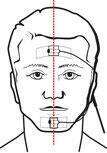
Suitability of the JAWAC Sensor to Complement CO2 Monitoring to Detect Obstructive Apnea during Propofol Sedation
2R&D, NOMICS S.A.
Introduction: Despite the CO2 monitoring for sedations, induced obstructive apneas still occur leading to desaturations with severe complications. The Jaw activity analysis (JAWAC) is a reference to detect sleep obstructive apneas (Chin sensor). The main purpose of this pilot study was to find an algorithm using JAWAC and CO2 monitoring data allowing a better and earlier recognition of obstructive apnea than the CO2 monitoring alone leading to improved monitoring.
Methods: This study was registered on ClinicalTrial.gov [NCT02909309]. 21 participants scheduled for sleep endoscopy were recruited. While recording those monitorings, the sedation was stepwise increased (by 1µg/ml based on the BIS using Marsh model). The records were analysed to define a new detetction sequence that was then compared to the CapnoLine (CO2 monitoring). The reference for apnea definition was a maintained zero value during 10 seconds on the CapnoLine.
Results: 54 apneas occurred. A new detection sequence was obtained combining the respiratory rate with JAWAC. This sequence detected obstructive apnea 37.5 seconds on average before the CapnoLine. The k agreement was 68% comparing this sequence and the CapnoLine. The specificity and sensitivity of this sequence were 92.5% and 76% respectively. The CapnoLine was arguably too late in detecting apnea as it signaled 2.5 seconds before SpO2 drop.
Discussion/Conclusion: The Gold standard - CO2 monitoring is not sufficient for sedation regarding morbimortality. In this study, the combination JAWAC+CapnoLine provided a reliable earlier recognition of obstructive apnea than the CO2 monitoring alone. This system should be assessed in a larger sample of population.



Powered by Eventact EMS